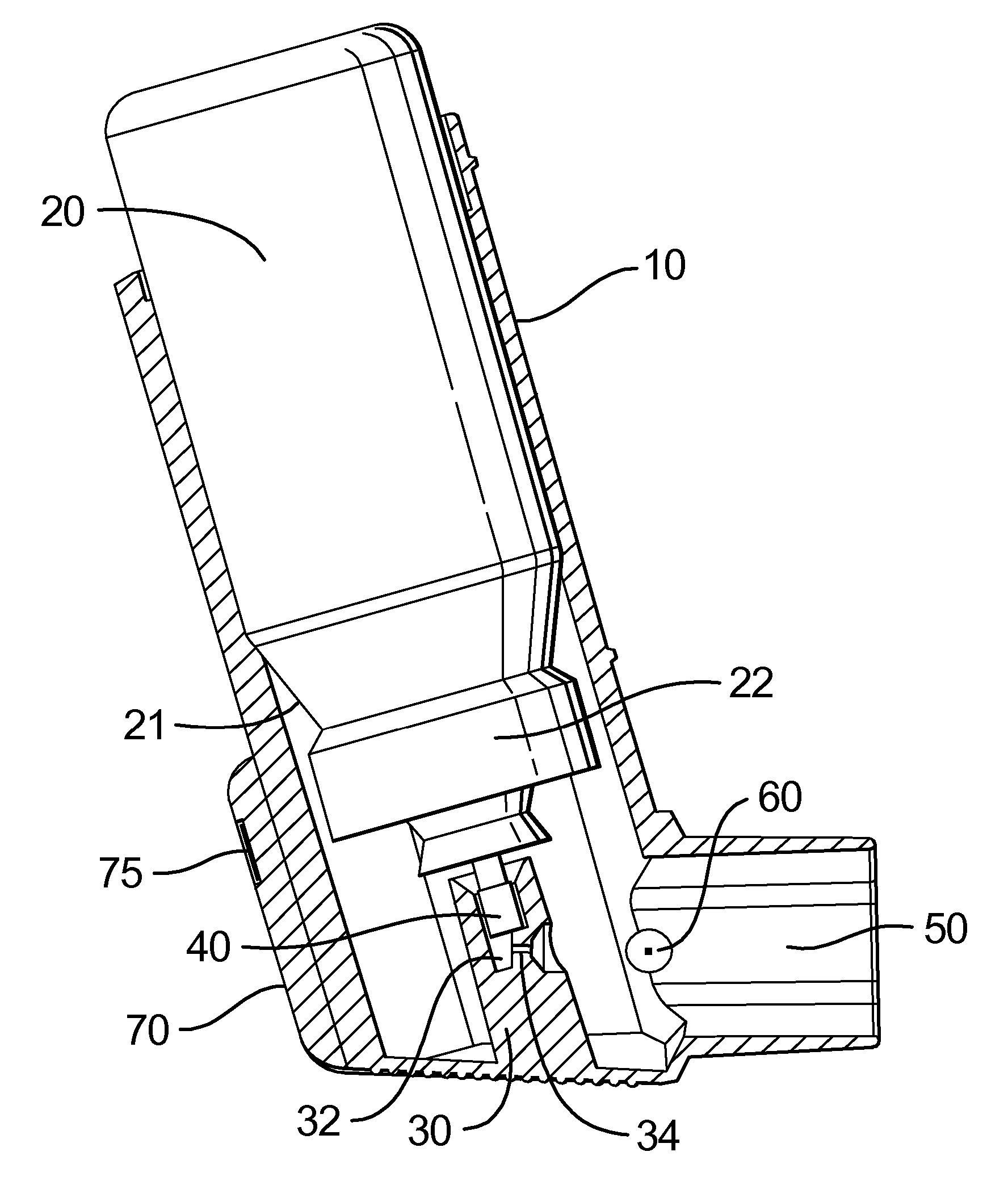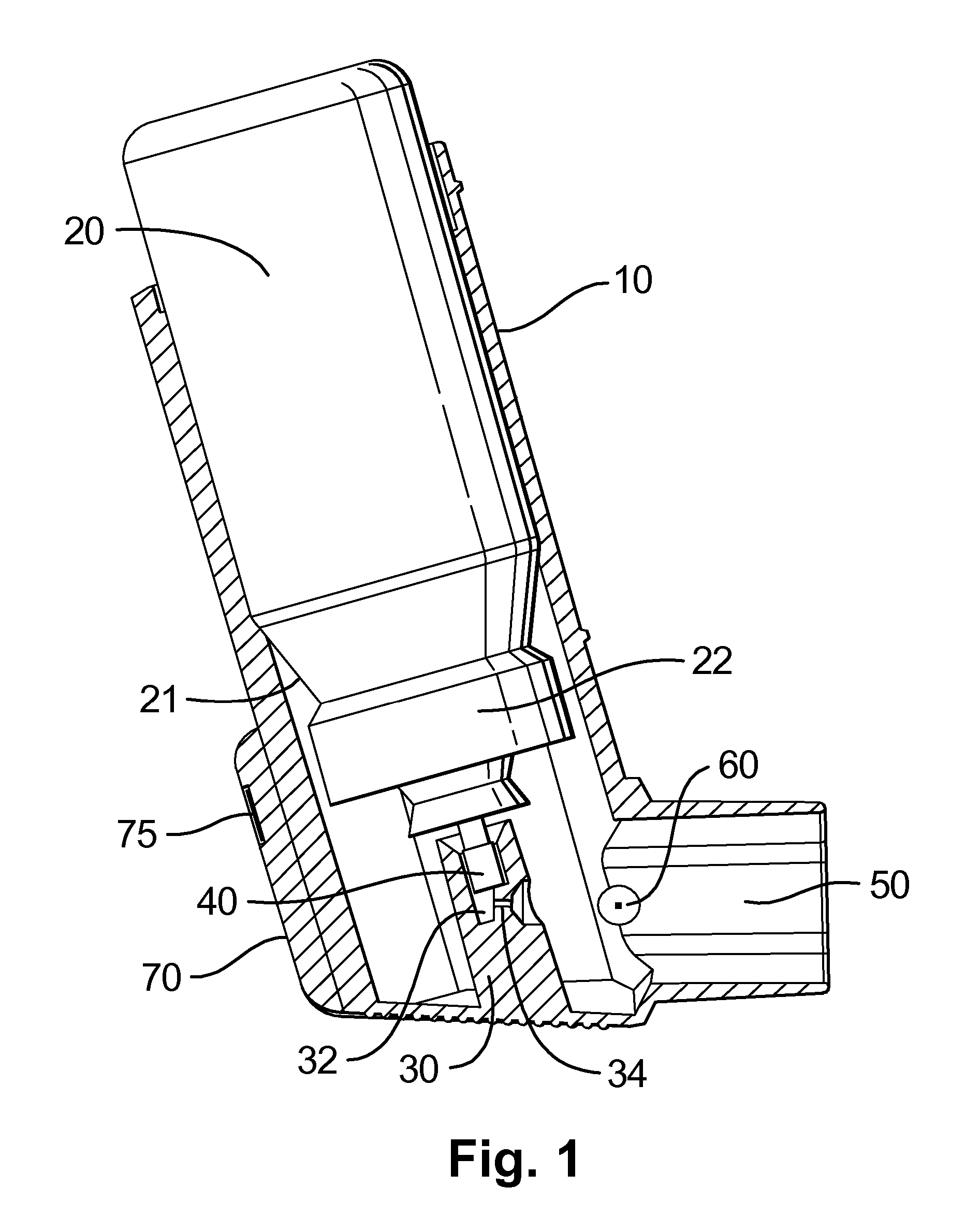Medicament dispenser
a technology of medicine dispensers and dispensers, which is applied in the field of medicine dispensers, can solve the problems of false readings, triggering of sensors, and false readings being registered on the dose counter, etc., and achieve the effects of reducing power dissipation in resistive components, reducing current, and low resistan
- Summary
- Abstract
- Description
- Claims
- Application Information
AI Technical Summary
Benefits of technology
Problems solved by technology
Method used
Image
Examples
Embodiment Construction
[0080] For the sake of brevity, each drawing depicts a sensor comprising an emitter / detector pair which emit and are responsive to infra red radiation. It should be understood that other forms of sensors, detailed herein, could equally be described in the drawings and used in the present invention. Furthermore, the drawings could equally apply to a sensor comprising only of a detector and lacking the corresponding emitter.
[0081] As shown in the cross-sectional perspective of FIG. 1, the aerosol canister 20 is located in the housing 10 so that one end protrudes from its open top, the canister being positioned such that the neck 21 and valve ferrule 22 are enclosed within housing 10. Spacer ribs (not shown) may be provided inside the housing to hold the external surface of the canister 20 spaced from the internal surface of the housing 10. A support 30 is provided at the lower end of the housing 10 and has a passage 32 in which the valve stem 40 of the aerosol canister 20 can be loca...
PUM
 Login to View More
Login to View More Abstract
Description
Claims
Application Information
 Login to View More
Login to View More - R&D
- Intellectual Property
- Life Sciences
- Materials
- Tech Scout
- Unparalleled Data Quality
- Higher Quality Content
- 60% Fewer Hallucinations
Browse by: Latest US Patents, China's latest patents, Technical Efficacy Thesaurus, Application Domain, Technology Topic, Popular Technical Reports.
© 2025 PatSnap. All rights reserved.Legal|Privacy policy|Modern Slavery Act Transparency Statement|Sitemap|About US| Contact US: help@patsnap.com



